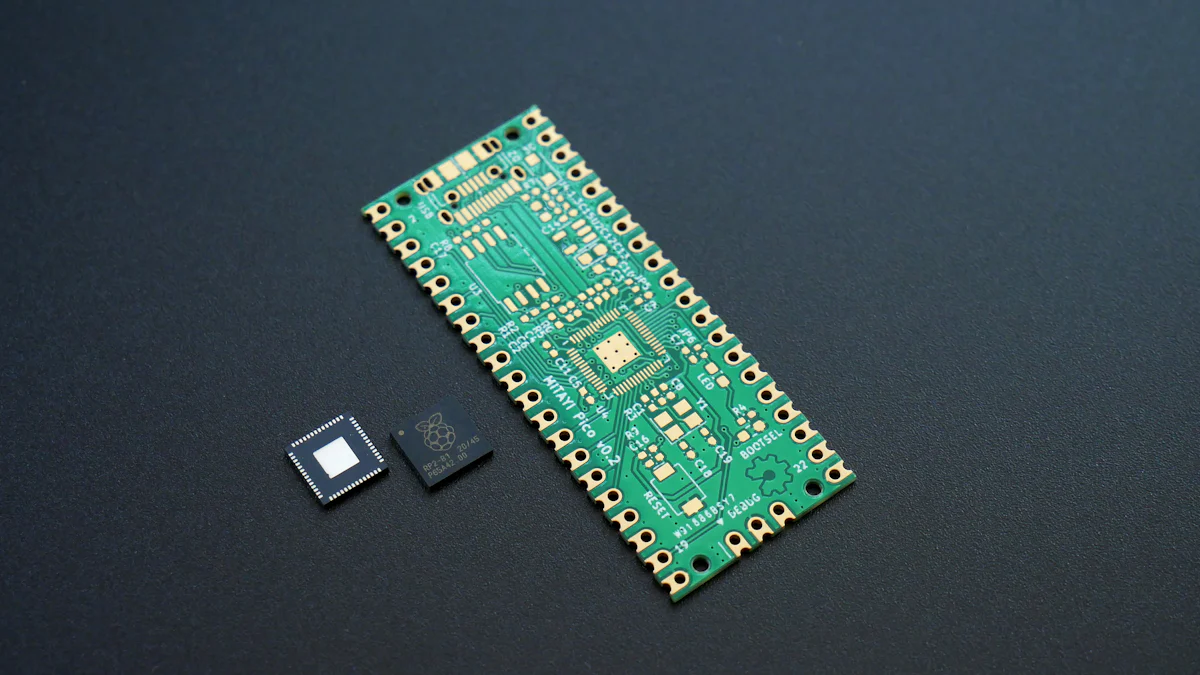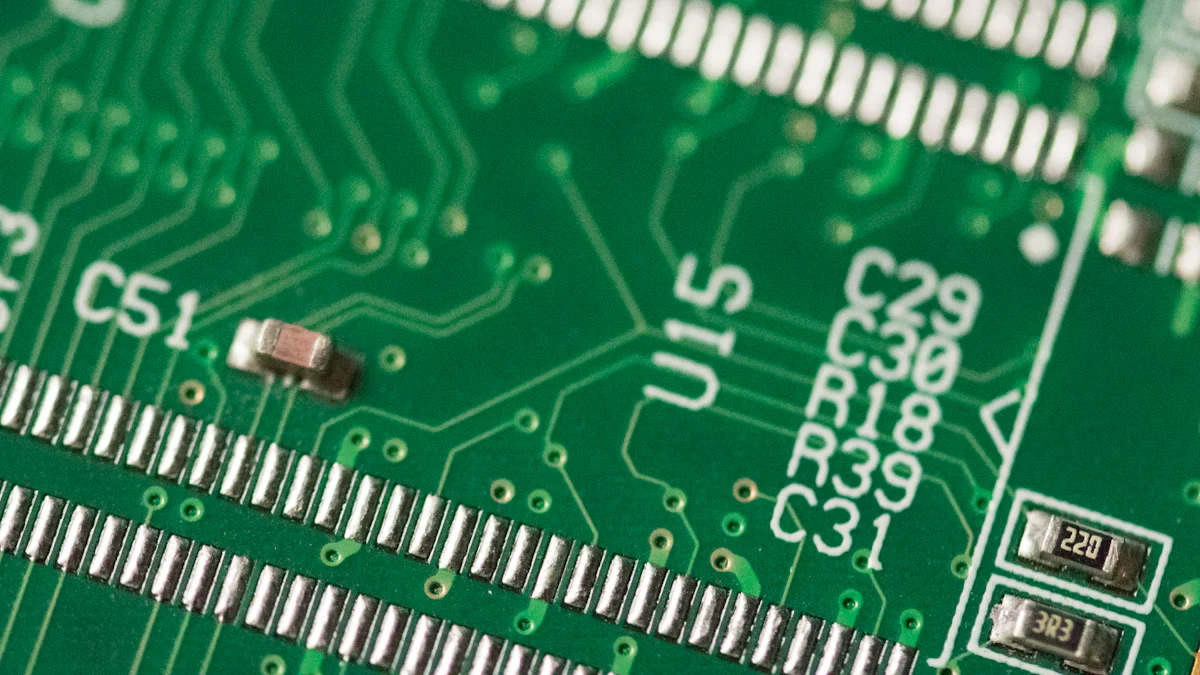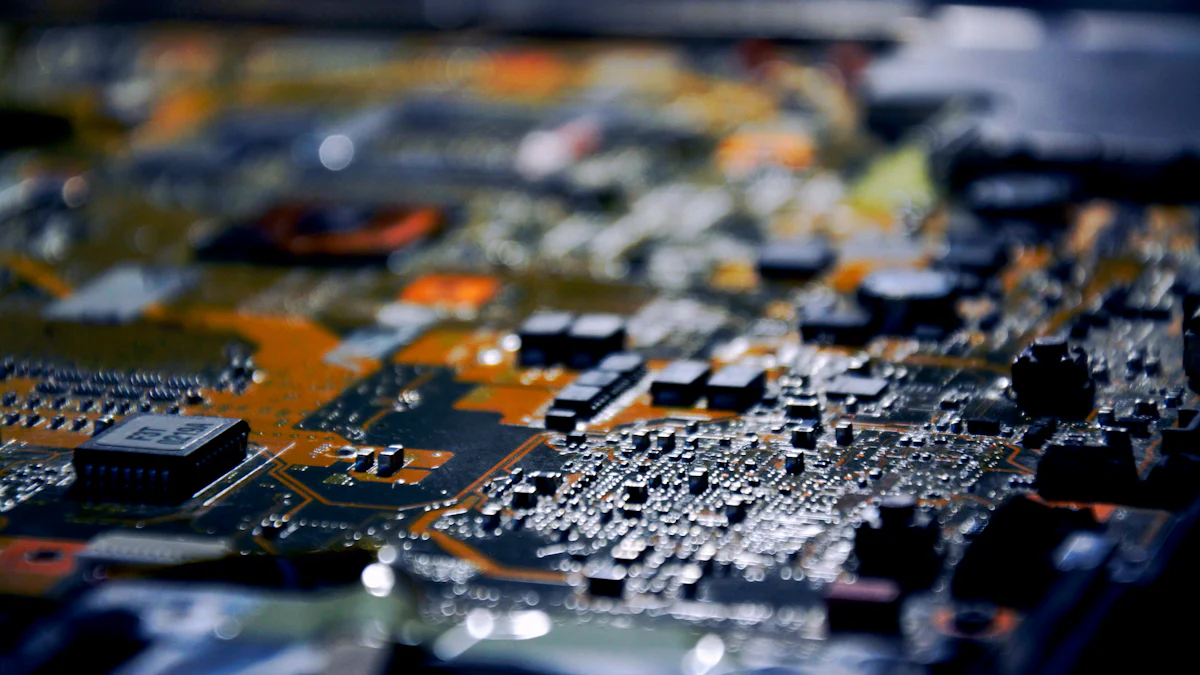
Advancements in silicon carbide (SiC) trays have transformed blue LED production by addressing critical manufacturing challenges. These trays, known for their high thermal conductivity and chemical resistance, ensure precise thermal management during the production process. Improved wafer quality and early detection of defects have increased overall yield by 30%, showcasing their efficiency. Additionally, SiC trays’ durability and resistance to abrasion enhance their performance in demanding environments. By integrating innovative materials and designs, blue LED SiC trays have become indispensable in achieving superior LED quality and production efficiency.
Key Takeaways
- Silicon carbide (SiC) trays significantly enhance blue LED production by improving thermal management, leading to a 30% increase in overall yield.
- The durability and chemical resistance of modern SiC trays reduce maintenance costs and extend their lifespan, making them a cost-effective choice for manufacturers.
- Innovative materials, such as high-purity silicon carbide and CVD coatings, provide superior thermal conductivity and wear resistance, ensuring consistent LED quality.
- Advanced structural designs of SiC trays promote uniform heat distribution, minimizing defects and ensuring high-quality LED production.
- Customization of SiC trays for specific manufacturing processes streamlines workflows and enhances overall production efficiency.
- The integration of automation and smart technologies in SiC tray design is paving the way for more precise and efficient manufacturing processes.
- Investing in advanced SiC trays not only improves production efficiency but also supports sustainability by reducing energy consumption and material waste.
The Role of Blue LED SiC Trays in Manufacturing
Importance of SiC Trays in LED Production
Silicon carbide (SiC) trays play a pivotal role in the production of blue LEDs. These trays provide a stable platform for the manufacturing process, ensuring precise handling of wafers and substrates. Their exceptional thermal conductivity allows efficient heat dissipation, which is critical for maintaining the integrity of LED components during high-temperature operations. By facilitating uniform thermal management, SiC trays contribute to consistent LED quality and reduce the risk of defects.
The chemical resistance of SiC trays further enhances their importance. They withstand exposure to harsh chemicals used in the manufacturing process without degrading, ensuring long-term reliability. Additionally, their mechanical strength and durability make them suitable for repeated use in demanding production environments. These features collectively position SiC trays as indispensable tools in achieving high efficiency and superior performance in blue LED production.
Challenges Faced by Traditional SiC Trays
Traditional SiC trays, while functional, exhibit several limitations that hinder their effectiveness in modern LED manufacturing. Their lower thermal conductivity often results in uneven heat distribution, which can compromise the quality of the LEDs produced. This inefficiency necessitates additional cooling systems, increasing the complexity and cost of the production process.
Another significant drawback lies in their reduced hardness and abrasion resistance. Over time, traditional trays are prone to wear and tear, leading to frequent replacements and higher maintenance costs. Their lower corrosion resistance also makes them vulnerable to damage from the chemicals used during production, further reducing their lifespan.
Traditional SiC trays also struggle to perform efficiently at higher temperatures. Their lower breakdown electric field and electron drift velocity limit their ability to handle the demands of advanced LED manufacturing. This often results in larger and less reliable components, which can negatively impact production efficiency and product quality.
In contrast, advancements in blue LED SiC trays have addressed these challenges, offering enhanced thermal management, durability, and overall performance. These innovations have revolutionized the manufacturing process, enabling producers to meet the growing demand for high-quality blue LEDs.
Latest Advancements in Blue LED SiC Trays

Material Innovations in SiC Trays
Recent advancements in materials have significantly enhanced the performance of blue LED SiC trays. Manufacturers now utilize high-purity silicon carbide, which offers superior thermal conductivity and exceptional chemical resistance. This material ensures that the trays can withstand extreme temperatures and harsh chemical environments without degradation. For instance, the integration of CVD silicon carbide coatings has introduced ultra-high purity surfaces and remarkable wear resistance. These coatings, applied through chemical vapor deposition, create a dense, pore-free layer that enhances durability and extends the lifespan of the trays.
The use of silicon carbide-coated graphite trays has also gained traction. These trays combine the hardness of silicon carbide with the lightweight properties of graphite, resulting in a product that is both robust and easy to handle. Their polished, mirror-like surfaces ensure minimal contamination during the manufacturing process, making them ideal for high-precision applications in the semiconductor and LED industries. By leveraging these material innovations, manufacturers have achieved greater reliability and efficiency in blue LED production.
Structural and Design Improvements
Structural and design advancements have further optimized the functionality of blue LED SiC trays. Engineers have focused on creating designs that enhance heat dissipation and improve wafer stability. For example, trays now feature intricate patterns and grooves that promote uniform thermal distribution. This innovation minimizes the risk of hotspots, ensuring consistent LED quality across production batches.
Additionally, modern SiC trays are designed to accommodate various manufacturing processes, such as MOCVD, ICP etching, and RTP. These processes demand high precision and stability, which the improved structural designs provide. The trays’ enhanced mechanical strength allows them to endure repeated use without compromising performance. By addressing the limitations of traditional designs, these advancements have set new standards for efficiency and reliability in LED manufacturing.
Enhancements in Manufacturing Efficiency
The latest developments in blue LED SiC trays have significantly boosted manufacturing efficiency. High thermal conductivity materials, combined with advanced structural designs, reduce energy consumption by optimizing heat management. This improvement not only lowers operational costs but also shortens production cycles, enabling manufacturers to meet growing market demands more effectively.
Moreover, the durability of modern SiC trays minimizes downtime caused by maintenance or replacements. Their resistance to wear and corrosion ensures consistent performance over extended periods, reducing the need for frequent interventions. Customized solutions, tailored to specific manufacturing requirements, further enhance efficiency by streamlining production workflows. These advancements have made SiC trays indispensable in achieving cost-effective and high-quality blue LED production.
Overcoming Manufacturing Challenges with Advanced SiC Trays
Improved Heat Resistance and Thermal Management
Advanced SiC trays have redefined heat resistance and thermal management in blue LED production. These trays utilize high-purity silicon carbide, which exhibits exceptional thermal conductivity. This property ensures efficient heat dissipation during high-temperature manufacturing processes. By maintaining stable thermal conditions, the trays prevent overheating, which often leads to defects in LED components.
The improved heat resistance of these trays allows them to endure extreme temperatures without degradation. This durability ensures consistent performance across multiple production cycles. Manufacturers benefit from reduced risks of thermal stress, which enhances the reliability of the final LED products. The integration of advanced materials and designs in blue LED SiC trays has set a new benchmark for thermal management in the industry.
Achieving Uniformity in LED Quality
Uniformity in LED quality remains a critical goal for manufacturers. Advanced SiC trays contribute significantly to achieving this objective. Their precise structural designs ensure even heat distribution across the entire surface. This uniformity minimizes the occurrence of hotspots, which can compromise the quality of LEDs.
The trays also provide a stable platform for wafers, reducing the likelihood of misalignment during production. This stability ensures that each LED meets the required specifications, resulting in consistent quality across batches. By addressing variations in thermal and mechanical conditions, advanced SiC trays enable manufacturers to produce LEDs with superior brightness and efficiency.
Cost-Effectiveness and Long-Term Benefits
The adoption of advanced SiC trays offers substantial cost-effectiveness and long-term benefits. Their enhanced durability reduces the frequency of replacements, leading to lower maintenance costs. The trays’ resistance to wear and corrosion ensures prolonged operational life, which translates to significant savings for manufacturers.
Additionally, the improved efficiency of these trays shortens production cycles, allowing manufacturers to meet market demands more effectively. The reduction in energy consumption further contributes to cost savings. Over time, the use of advanced blue LED SiC trays proves to be a valuable investment, delivering both economic and operational advantages.
The Future of Blue LED SiC Trays

Emerging Trends in SiC Tray Technology
The evolution of silicon carbide (SiC) tray technology continues to shape the future of blue LED production. Researchers and manufacturers are focusing on integrating advanced materials and innovative designs to enhance performance. High-purity silicon carbide remains a cornerstone, but emerging trends point toward hybrid materials. For instance, the combination of SiC with graphene or other nanomaterials is under exploration. These hybrids aim to improve thermal conductivity and mechanical strength while reducing weight.
Automation and smart manufacturing technologies are also influencing SiC tray development. Engineers are designing trays compatible with automated handling systems, ensuring precision and reducing human error. Additionally, the integration of sensors within trays is gaining traction. These sensors monitor temperature and stress levels in real-time, providing valuable data to optimize production processes.
Patents from organizations like NASA’s Smart Sensing and Electronics Systems Branch highlight the potential for further innovation. These patents emphasize advancements in SiC technology, including methods to enhance durability and efficiency. Such developments pave the way for next-generation trays that meet the increasing demands of high-performance LED manufacturing.
Potential Impacts on the LED and Electronics Industry
The advancements in blue LED SiC trays are poised to create significant ripples across the LED and broader electronics industries. Enhanced thermal management and durability directly translate to higher-quality LEDs. This improvement supports the growing demand for energy-efficient lighting solutions in residential, commercial, and industrial applications.
In the semiconductor sector, the adoption of advanced SiC trays facilitates the production of more reliable components. This reliability is critical for devices requiring consistent performance, such as smartphones, laptops, and automotive electronics. The trays’ ability to withstand extreme conditions also aligns with the needs of emerging technologies like electric vehicles and 5G infrastructure.
Cost-effectiveness remains another key impact. By reducing maintenance and replacement costs, advanced SiC trays enable manufacturers to allocate resources more efficiently. This efficiency fosters competitive pricing, making high-quality LEDs accessible to a broader market. Furthermore, the environmental benefits of durable and efficient trays contribute to sustainability goals, aligning with global efforts to reduce waste and energy consumption.
The future of blue LED SiC trays holds immense promise. As technology advances, these trays will continue to drive innovation, shaping the trajectory of the LED and electronics industries.
Advancements in blue LED SiC trays have revolutionized LED manufacturing by addressing critical challenges and enhancing production efficiency. These innovations deliver improved thermal management, durability, and cost savings, making them indispensable for high-quality LED production. The integration of high-purity materials and optimized designs ensures consistent performance and reliability. As SiC technology evolves, it holds immense potential to redefine LED manufacturing, enabling higher efficiency and better thermal management. The future of blue LED SiC trays promises groundbreaking developments that will continue to shape the LED and electronics industries.
FAQ
What are SiC trays, and why are they important in blue LED production?
Silicon carbide (SiC) trays serve as platforms for handling wafers and substrates during blue LED manufacturing. Their high thermal conductivity ensures efficient heat dissipation, which is critical for maintaining the integrity of LED components. Additionally, their chemical resistance and mechanical strength make them reliable tools for achieving consistent LED quality in demanding production environments. SiC trays.
How do advanced SiC trays improve thermal management?
Advanced SiC trays utilize high-purity silicon carbide, which offers exceptional thermal conductivity. This property allows for uniform heat distribution, preventing hotspots that could damage LED components. By maintaining stable thermal conditions, these trays enhance the reliability and efficiency of the manufacturing process.
What material innovations have been introduced in modern SiC trays?
Modern SiC trays incorporate high-purity silicon carbide and advanced coatings like CVD silicon carbide. These materials provide superior thermal conductivity, chemical resistance, and wear resistance.
How do structural improvements in SiC trays benefit LED production?
Structural advancements, such as intricate patterns and grooves, promote even heat distribution and improve wafer stability. These designs reduce the risk of defects and ensure consistent LED quality. Additionally, enhanced mechanical strength allows the trays to endure repeated use without compromising performance.
Are advanced SiC trays cost-effective for manufacturers?
Yes, advanced SiC trays offer significant cost savings. Their durability reduces the need for frequent replacements, lowering maintenance costs. Improved thermal management shortens production cycles and reduces energy consumption, further enhancing cost-effectiveness over time.
Can SiC trays be customized for specific manufacturing processes?
Manufacturers can customize SiC trays to meet the requirements of various processes, including MOCVD, ICP etching, and RTP. These tailored solutions ensure optimal performance and compatibility, streamlining workflows and improving overall production efficiency.
What challenges do traditional SiC trays face in LED manufacturing?
Traditional SiC trays often struggle with lower thermal conductivity, leading to uneven heat distribution. They also exhibit reduced abrasion resistance and corrosion resistance, resulting in shorter lifespans. These limitations increase maintenance costs and hinder production efficiency.
How do advanced SiC trays contribute to sustainability?
Advanced SiC trays support sustainability by reducing waste and energy consumption. Their durability minimizes the need for replacements, decreasing material waste. Additionally, their efficient thermal management lowers energy usage during production, aligning with global efforts to promote eco-friendly practices.
What future trends are expected in SiC tray technology?
Emerging trends include the integration of hybrid materials like SiC with graphene to enhance thermal conductivity and mechanical strength. Automation and smart manufacturing technologies are also influencing tray designs, with features like sensor integration for real-time monitoring of temperature and stress levels.
How do advancements in SiC trays impact the electronics industry?
The improved performance of SiC trays enhances the quality and reliability of LEDs, supporting their use in energy-efficient lighting and advanced electronics. These trays also facilitate the production of high-performance components for applications like electric vehicles, 5G infrastructure, and consumer electronics, driving innovation across industries.